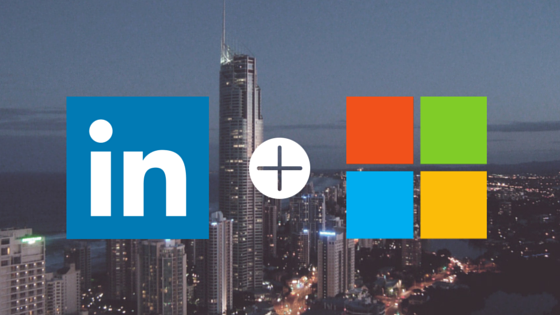
June 13, 2016: Microsoft is acquiring LinkedIn for approximately $26 billion, and while it will obviously take a while to bring these two companies together, CEO Satya Nadella and LinkedIn LinkedIn CEO Jeff Weiner have stated that the acquisition had been in the works for some time, and that the “purpose” and “structure” of both companies are already closely aligned.
Jeff Weiner writes the merger will bring many benefits to LinkedIn’s professional audience, including:
- Massively scaling the reach and engagement of LinkedIn by using the network to power the social and identity layers of Microsoft’s ecosystem of over one billion customers. Think about things like LinkedIn’s graph interwoven throughout Outlook, Calendar, Active Directory, Office, Windows, Skype, Dynamics, Cortana, Bing and more.
- Accelerating our objective to transform learning and development by deeply integrating the Lynda.com/LinkedIn Learning solution in Office alongside some of the most popular productivity apps on the planet (note: 6 of the top 25 most popular Lynda.com courses are related to Microsoft products).
- Giving Sponsored Content customers the ability to reach Microsoft users anywhere across the Microsoft ecosystem, unlocking significant untapped inventory.
Why this makes sense
1. Quality of audience. While Facebook, Twitter, Pinterest, SnapChat et al provide communications services, only LinkedIn has carved out a niche for itself as a place for professional people – and businesses – to network. Today, 94 percent of B2B marketers surveyed reported using LinkedIn; according to the Content Marketing Institute. This huge, pragmatic, goals-oriented audience is already likely using many of Microsoft’s products, especially Outlook and the Office Suite, so bringing them together makes a lot of sense.
2. Content. The acquisition also makes sense from a content standpoint. LinkedIn own Lynda.com, a large repository of training software training content. Microsoft has gigantic libraries of content relating to software and software development. Consolidating these resources and giving them a social layer will make this no-nonsense, goals-based content more valuable. Additionally, LinkedIn has in the past two years positioned itself as a publishing platform, something that Microsoft lacks, but could turbocharge by giving this platform more visibility through its software ecosystem.
3. Targeting. Giving marketers an opportunity to “reach Microsoft users anywhere across the Microsoft ecosystem” vastly extends the possible ways that marketers can reach audiences with relevant messaging. While LinkedIn’s audience is large (400 million), Microsoft’s installed base is more than twice as large (1 billion), and Microsoft’s ad targeting technology is first-rate.
Unlike many social media mergers and acquisitions, which can often seem flaky or wishful, this deal seems solid, mature, and rational. It will be very exciting to watch new services – free or paid – emerge from this new entity, which offers much to LinkedIn’s users as well as Microsoft’s huge global worldwide base.
- 10 Mistakes to Avoid When Using QR Codes for Marketing - September 20, 2023
- Kevin Lee on How AI Changes the SEO Landscape - August 31, 2023
- The Power of Compound Marketing: Kevin Lee Presents @ 1MediaWorld 2023 Global Conference - March 7, 2023
